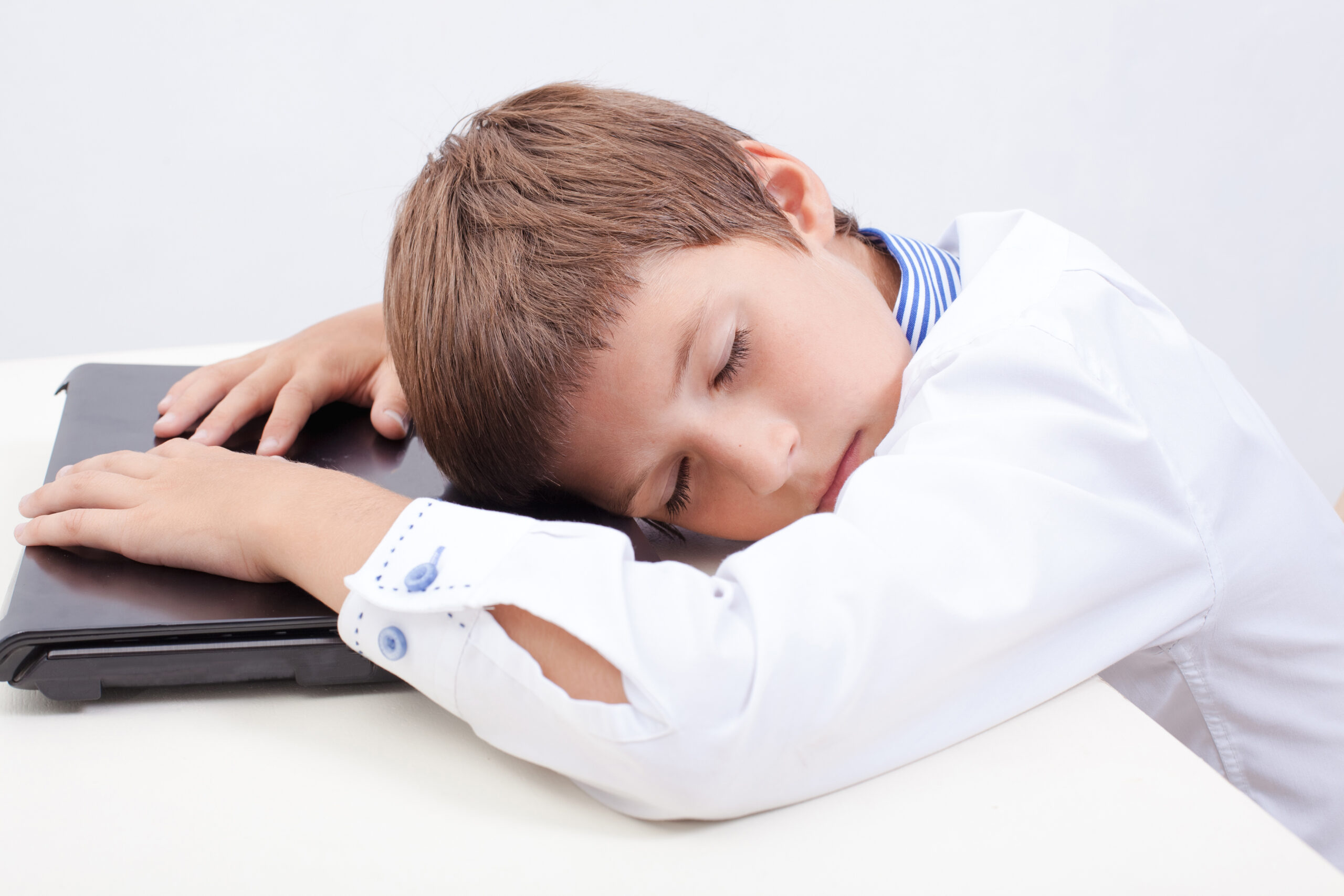Narcolepsy affects the nervous system. It causes sleeping patterns and disruptions. People with this condition experience uncontrollable sleepiness during the day. Narcolepsy can start at any age and persist throughout life, but the first symptoms appear in adolescence. The condition may be hereditary. Living with narcolepsy is very burdensome because patients fall asleep even during the day while performing everyday activities.
In addition, sleep problems also occur at night. Unfortunately, although narcolepsy is not progressive, it remains incurable, and patients live with it, although this is not normal functioning.
Narcolepsy is often confused with depression, epilepsy, medication side effects, poor sleep habits, recreational drug use, or laziness, making misdiagnosis likely.
It is worth mentioning that typical symptoms appear in adolescence and early adulthood. Particularly devastating is that narcolepsy occurs during the pivotal teenage years, when education, personal growth, and career choices take place.
Narcolepsy is a disease of sudden, involuntary sleep attacks during the day. If the course of the disease is typical, there are attacks of a sudden, strong need to sleep during the day.
Someone who has narcolepsy struggles to stay alert, but ultimately succumbs to sleep. It frequently happens in inconvenient places (e.g., at work or in a club). This person immediately falls into the REM sleep phase.
However, such a “forced” nap usually lasts about 10-20 minutes and can be repeated several times a day. During an episode, one may experience a sudden loss of muscle tone, visual hallucinations, and repetitive behavior. These symptoms may include cataplexy and hypnagogic hallucinations. After a short sleep, the patient wakes up.
Very often, people with narcolepsy can hear everything during a daytime sleep attack. When their eyes are open they can see. But, what is interesting, because of cataplexy, they cannot move. Involuntary behaviors mean that the person continues to perform an activity (e.g., watching television, arranging things, talking on the phone) during a sleep episode.
The seizures described above cannot be considered as loss of consciousness, such as in epilepsy. In narcolepsy, the brain of a sick person shows a disturbed sleep rhythm during the night (too little REM sleep, or deep sleep). Therefore, the brain tries to make up for its deficiencies during the day. Narcoleptic naps usually make you feel rested, but only for a few hours.
In the case of children![]() , the symptoms of this disease are very often misinterpreted.
, the symptoms of this disease are very often misinterpreted.
Diagnosing diseases in children can be difficult, as it is challenging to accurately assess their sleep needs. It also doesn't help that children can compensate for sleepiness through hyperactivity, which is sometimes diagnosed instead of narcolepsy. This condition is sometimes confused with laziness, epilepsy, neurological diseases, or intellectual disability. It also happens that during cataplexy and the resulting falls, these falls are interpreted as clumsiness.
Narcolepsy in children can cause feelings of helplessness or shame. It may also lead to depression. Therefore, it is significant for the child to feel understood and not judged, especially by those around them. In addition, drowsiness resulting from narcolepsy may harm the child's memory and concentration, which will be noticeable in worse school results.

Narcolepsy is a neurological disease. The symptoms may be related to the abnormal regulation of the rapid eye movement phase. REM![]() is a state of very deep sleep that occurs before falling asleep and causes hallucinations. During a normal sleep cycle, a person goes through non-rapid eye movement sleep and eventually transitions to REM sleep. In REM sleep, dreaming is more likely to occur, most of the body's muscles become paralyzed, and the eyes move back and forth under the eyelids.
is a state of very deep sleep that occurs before falling asleep and causes hallucinations. During a normal sleep cycle, a person goes through non-rapid eye movement sleep and eventually transitions to REM sleep. In REM sleep, dreaming is more likely to occur, most of the body's muscles become paralyzed, and the eyes move back and forth under the eyelids.
Narcolepsy causes elements of REM sleep to blend with waking moments, leading to cataplexy and REM paralysis triggered by intense emotions during the day. This results in a loss of muscle control. Individuals with narcolepsy also experience vivid sleep-like hallucinations and paralysis when falling asleep or waking up.
A recently discovered neurotransmitter is produced in narcolepsy patients in smaller amounts than in completely healthy people. It probably has to do with an autoimmune reaction. Type 1 narcolepsy![]() (narcolepsy with cataplexy) occurs when the immune system cells attack brain cells responsible for producing hypocretin. It is a hormone that helps regulate sleep patterns.
(narcolepsy with cataplexy) occurs when the immune system cells attack brain cells responsible for producing hypocretin. It is a hormone that helps regulate sleep patterns.
Narcolepsy may be hereditary![]() . Individuals with this condition often have mutations in the T-cell receptor gene. Additionally, certain genetic variants in a group of genes known as the human leukocyte antigen complex have been linked to narcolepsy.
. Individuals with this condition often have mutations in the T-cell receptor gene. Additionally, certain genetic variants in a group of genes known as the human leukocyte antigen complex have been linked to narcolepsy.
Narcolepsy can also be caused by brain damage![]() . Symptoms of narcolepsy can develop if there is a head injury that damages the hypothalamus. Brain tumors can also cause this condition.
. Symptoms of narcolepsy can develop if there is a head injury that damages the hypothalamus. Brain tumors can also cause this condition.
Of course, mental problems may arise in the course of the disease, especially when the patient has problems understanding the essence of the disease. Also, people from the patient's environment often can not understand that it is impossible to control sleepiness attacks. Therefore, the lack of understanding significantly disturbs the self-esteem of narcolepsy people and their contact with others. Mental problems are alleviated through special educational programs in schools and among health professionals.
Narcolepsy impacts the brain's wakefulness systems, which are usually activated by warning signals from the brainstem![]() . The brainstem is responsible for various basic functions, and these signals spread throughout the brain to keep us alert. In addition, the hypothalamus
. The brainstem is responsible for various basic functions, and these signals spread throughout the brain to keep us alert. In addition, the hypothalamus![]() , which is located nearby, produces hypocretin, a chemical that triggers and maintains the brainstem's warning signals.
, which is located nearby, produces hypocretin, a chemical that triggers and maintains the brainstem's warning signals.
Meanwhile, hypocretin plays a crucial role in regulating wakefulness and sleep. Without hypocretin, people with narcolepsy struggle to stay awake for extended periods, and their waking and sleeping cycles may overlap. This overlapping can cause hallucinations and paralysis when falling asleep or waking up. Moreover, the decrease in hypocretin can also affect other essential chemicals in the brain. We talk about dopamine, serotonin – the hormones that can impact overall well-being. That's why antidepressants that target these neurotransmitters are occasionally recommended for treating narcolepsy.
Researchers are currently developing methods to replicate the effects of hypocretin by targeting and activating its receptors. Additionally, they are studying the cause of the loss of hypocretin cells (an autoimmune reaction) to intervene in the first stage and prevent the onset of narcoleptic symptoms.
Sleepiness is often the first and only symptom of narcolepsy. It is excessive and may occur in uncomfortable situations. However, drowsiness is a symptom that also is a part of the course of other ailments. In contrast, cataplexy only occurs in narcolepsy. Most often, the coexistence of these two symptoms allows for the correct diagnosis.
In most patients, there are indications for specialist tests![]() to confirm the diagnosis and allow for the selection of appropriate treatment. First of all, a polysomnographic examination is performed. Its purpose is to objectify the occurrence of sleepiness and to find possible other causes of the disease. On the second day after this test, sleep latency is performed, the task of which is to assess the speed with which the patient falls asleep and how quickly REM sleep occurs.
to confirm the diagnosis and allow for the selection of appropriate treatment. First of all, a polysomnographic examination is performed. Its purpose is to objectify the occurrence of sleepiness and to find possible other causes of the disease. On the second day after this test, sleep latency is performed, the task of which is to assess the speed with which the patient falls asleep and how quickly REM sleep occurs.
In addition to the above-mentioned tests, a blood test is also used, which allows the determination of immune system antigens in narcolepsy patients. A positive test result – does not confirm that we are dealing with narcolepsy. In case of diagnostic doubts, the level of orexin in the cerebrospinal fluid should be determined.
Treatment of narcolepsy focuses on its symptoms. It involves the administration of psychostimulants![]() . These are specifically created to fight off extreme sleepiness by stimulating the central nervous system.
. These are specifically created to fight off extreme sleepiness by stimulating the central nervous system.
People with narcolepsy must maintain a regular sleep-wake rhythm – this involves short 15-minute naps during the day. They should also avoid alcohol and other drugs. It is because they can disturb the sleep-wake rhythm. Moreover, regular exercise is recommended.

Women with narcolepsy who are or would like to become pregnant![]() should be under close medical supervision. Your doctor will decide which medicines should be continued, the dose changed or stopped altogether.
should be under close medical supervision. Your doctor will decide which medicines should be continued, the dose changed or stopped altogether.
It's worth mentioning that the drugs utilized to ease narcolepsy symptoms have the potential to cross the placenta. Consequently, the child in the womb is also affected by the drugs taken by the woman. The same is true for mothers who breastfeed, as the active substance used in narcolepsy drugs is passed on to a newborn baby through breast milk. Due to these factors, medical professionals may recommend that pregnant or nursing individuals discontinue the use of narcolepsy medications.
Women with narcolepsy during pregnancy are also at risk of various complications. Occasionally, cataplexy may occur during labor, which may affect the course of delivery itself.
It is also worth noting that caring for a newborn due to the disease is more challenging – the affected woman feels drowsy during the day and involuntarily falls asleep while breastfeeding![]() or feeding an infant.
or feeding an infant.
Narcoleptic people![]() should inform their relatives about their illness. They should find out about it before they are frightened by the sudden loss of consciousness. In addition, they will know how to behave during a cataplexy attack and how to help if necessary.
should inform their relatives about their illness. They should find out about it before they are frightened by the sudden loss of consciousness. In addition, they will know how to behave during a cataplexy attack and how to help if necessary.
Narcoleptics should avoid falling asleep alone, preferably when asked for company.
People who feel an attack coming should stop what they are doing and go for a nap. For example, visual and auditory hallucinations and weakening of motor functions indicate an upcoming sleep episode.
Patients suffering from narcolepsy should inform their employer about their problem. It is best if a medical certificate of illness is presented. Then it will be possible to establish a work schedule that will take into account naps.
Narcoleptics should not get behind the wheel unless allowed by a doctor.
Patients should avoid both alcohol and caffeine. These two elements affect how medications work and can cause insomnia or excessive daytime sleepiness.
Physical activity, such as walking, can stimulate the body of a person with narcolepsy.
To prevent narcolepsy, it's helpful to maintain a consistent sleep schedule by waking up and going to bed at regular times. Make sure to get enough sleep each night.
Narcoleptics should keep abreast of the latest information and research on narcolepsy. The more they know about the disease, the better their quality of life.

People with narcolepsy should follow a few simple rules. They should not travel alone but with a trusted person. It is worth noting that many airports and train stations offer assistance in the form of support staff and wheelchairs. Thanks to this, the patient will avoid physical exertion and agitation that can cause cataplexy. In addition, a patient with narcolepsy should always have a patient information card with them, thanks to which it will be possible to quickly and correctly treat them.
Some drugs for narcolepsy fall under the regulations on controlled substances, and traveling with them involves compliance with certain formalities.
Narcolepsy has many consequences![]() . Sleep attacks and cataplexy that attack patients in public places are embarrassing and often lead to social problems and disturbed interpersonal relationships. Sufferers often have difficulty staying awake during social gatherings or lose muscle control when laughing. In addition, the disease can interfere with physical activity. Perhaps due to lower activity levels or slower metabolisms, many people with narcolepsy are overweight.
. Sleep attacks and cataplexy that attack patients in public places are embarrassing and often lead to social problems and disturbed interpersonal relationships. Sufferers often have difficulty staying awake during social gatherings or lose muscle control when laughing. In addition, the disease can interfere with physical activity. Perhaps due to lower activity levels or slower metabolisms, many people with narcolepsy are overweight.
The disease takes away the possibility of normal functioning![]() , e.g., working or driving. Because of this, the patient loses their independence, and financial problems occur. Narcoleptics often fall into depression and have an increased risk of suicidal behavior. To avoid all these complications, the patient should work closely with the doctor. It will help to resolve any distressing symptoms or side effects of the treatment.
, e.g., working or driving. Because of this, the patient loses their independence, and financial problems occur. Narcoleptics often fall into depression and have an increased risk of suicidal behavior. To avoid all these complications, the patient should work closely with the doctor. It will help to resolve any distressing symptoms or side effects of the treatment.